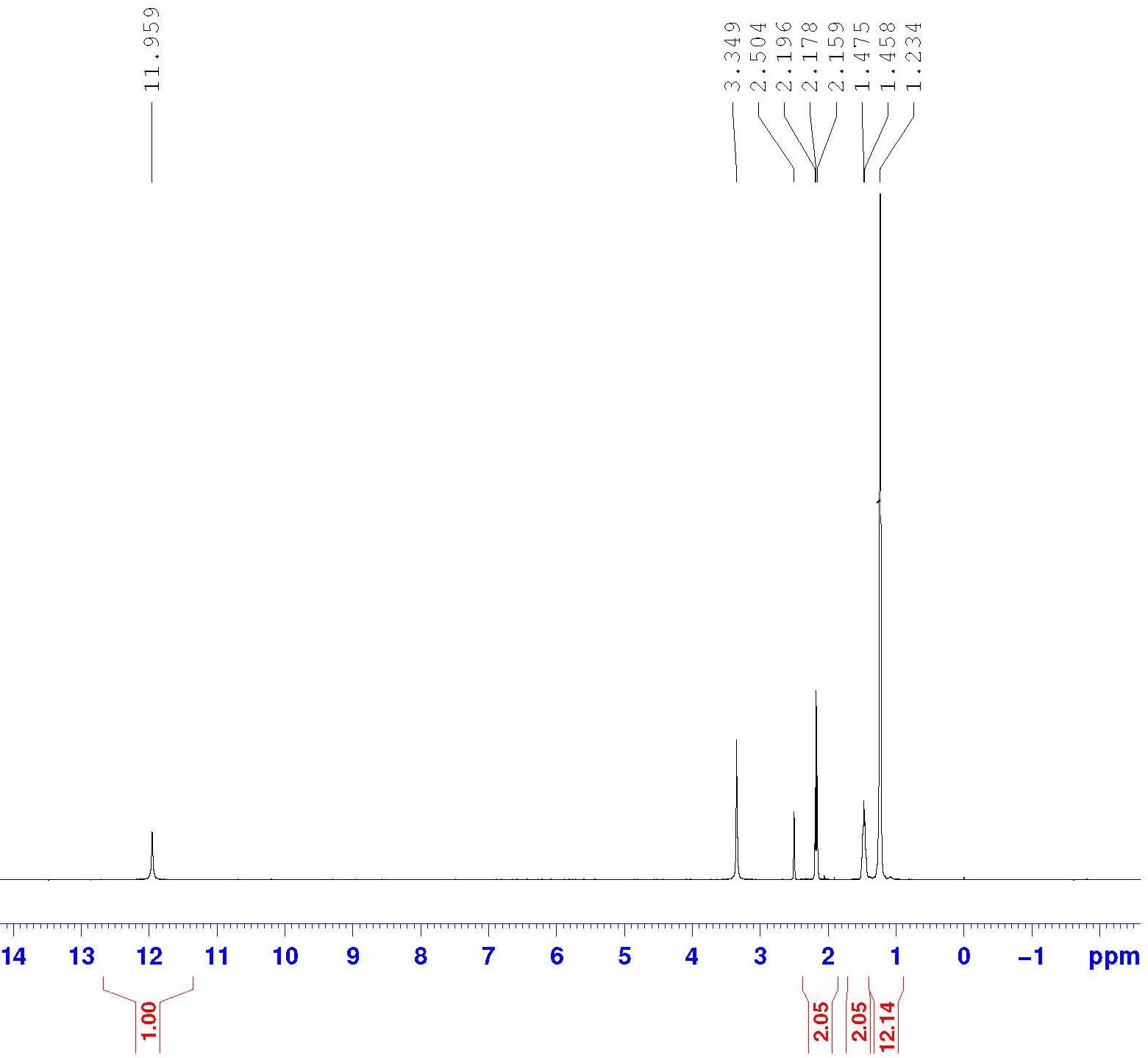With water at 100 – 225℃ under 18617.8 Torr for 8h Temperature Sealed tube Inert atmosphere
Experimental Procedure
Examples 1A & IB – Direct Hydrolysis of 1,18-Octadecanedioic Acid Dimethyl Ester (ODDAME). A 203.4 gram sample of solid ODDAME was charged into a 600 mL Hastelloy C Parr reactor vessel equipped with a baffle and two sets of 4 x 45° pitch blade impellers, internal thermocouple, and sampling dip tube. The ODDAME sample was recrystallized prior to being charged into the vessel. Then, 106.9 grams of deionized water was charged into the reactor. The reactor vessel was sealed and disposed into the reactor, illustrated in Figure 2. The reactor included an aluminum block heater, an overhead stir motor, and a vent line equipped with a pressure regulator that connects to a condenser. The reactor also has a water feed system. The reaction mixture was heated to 100 °C to melt the ODDAME (m.p. ~60 °C) under a continuous nitrogen purge (900 seem) in the reactor headspace. The pressure regulator on the reactor vent line was adjusted until the pressure in the reactor was measured as ~360 psig. After the regulator was set, the reactor vessel was leak tested at targeted reactor pressure, and the headspace of the system was purged with nitrogen for 30 minutes at 900 seem. The system was then heated to 225 °C (internal reactor temperature) at 1000 rpm stir rate under a nitrogen purge headspace of 900 seem. The condensate receiver was cooled to <15 °C using a glycol chiller system. When the internal reactor reached 223 °C, the time was referenced as 0 minutes (e.g., start of the timed reaction). As the reaction proceeded, condensate was retrieved from the condenser (i.e., condensate receiver) every 30 minutes, and the mass of the condensate was measured. Over the ensuing 30 minutes, following the collection of the condensate, water was charged into the reaction vessel at the time-averaged mass rate of the condensate collected in the condenser during the previous 30-minute interval (i.e., mass of condensate collected in previous 30 minute interval / 30 minutes). For Example 1A, the reaction proceeded for 6 hours at “225 °C. For Example IB, the reaction proceeded for 8 hours at ~225 °C. Then, the water feed was stopped and the reactor pressure was decreased gradually to remove water from the reactor. After most of the water was removed from the reactor, the reactor contents were transferred under a nitrogen atmosphere to a glass container. Nitrogen headspace maintained until reactor contents reach at room temperature. The masses of the water and the reactor contents were measured. A portion of the sample was analyzed by gas chromatograph (GC). About 1 gram of the wet sample was dissolved in toluene (~10 grams) at 95-100 °C. Then, 500 μ of the top layer was transferred to a 2 mL GC vial. Then 400 μ. of Ν,Ο- bis(trimethylsilyl)trifluoro-acetamide (Aldrich Chemical Co., St. Louis, Missouri, USA) was added to the GC vial. The vial was sealed and then heated at 60 °C for 2 hours under agitation (230 rpm shaking) until the mixture became homogeneous. Then, the silylated material was diluted with 300 μ of ethyl acetate. The vial sample was analyzed on a GC equipped with an FID detector, a hydrogen carrier gas, and a Restek TG65 capillary column. Results are reported in Table 1. As used herein, the “Conversion percent” is a molar percent and is: 100*{[2XODDAME + XODDA(H)ME]initial – [2XODDAME + XODDA(H) ME] final]} / [2XODDAME + XoDDA(H)ME]initiai, where ODDAME refers to 1,18-octadecanedioic acid dimethyl ester, ODDA(H)ME refers to 1,18-octadecanedioic acid monomethyl ester, and XODDAME and XODDA(H)ME refer t0 the mole fraction of ODDAME and ODDA(H)ME, respectively. As used herein, “ODDA Yield percent” is a molar percent and is: 100*XODDA / [XODDA + XODDAME + XODDA(H)MEL where XODDA is the mole fraction of ODDA, and the other terms have the meanings as defined above. As used herein, “ODDA(H)M E Yield percent” is a molar percent and is: 100*XODD(H)ME / [XODDA + XODDAME + XODDA(H)ME], where the terms have the meanings as defined above. As used herein, the “Overall WatenOil Molar Ratio” is Z*[(mass of water initially) + (mass of water added during reaction) / (mass of water initially), where Z is 10 for a 10:1 initial water-to-oil molar ratio, and is 40 for a 40:1 initial water-to-oil molar ratio. Table 1 | |




